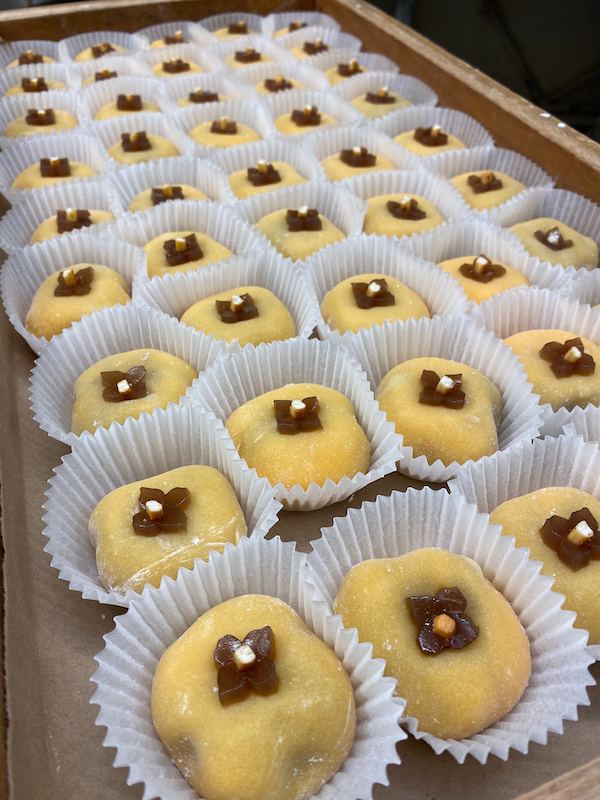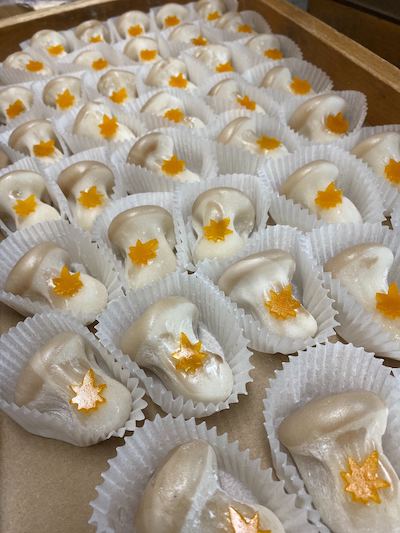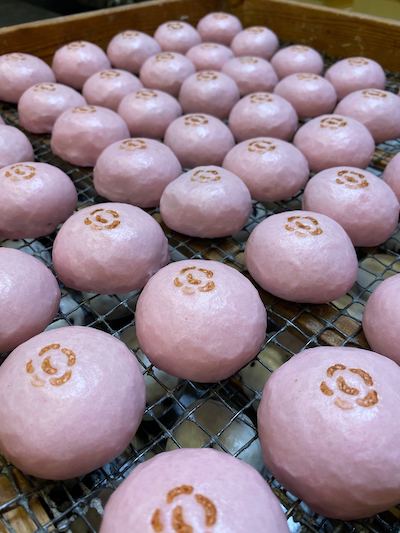
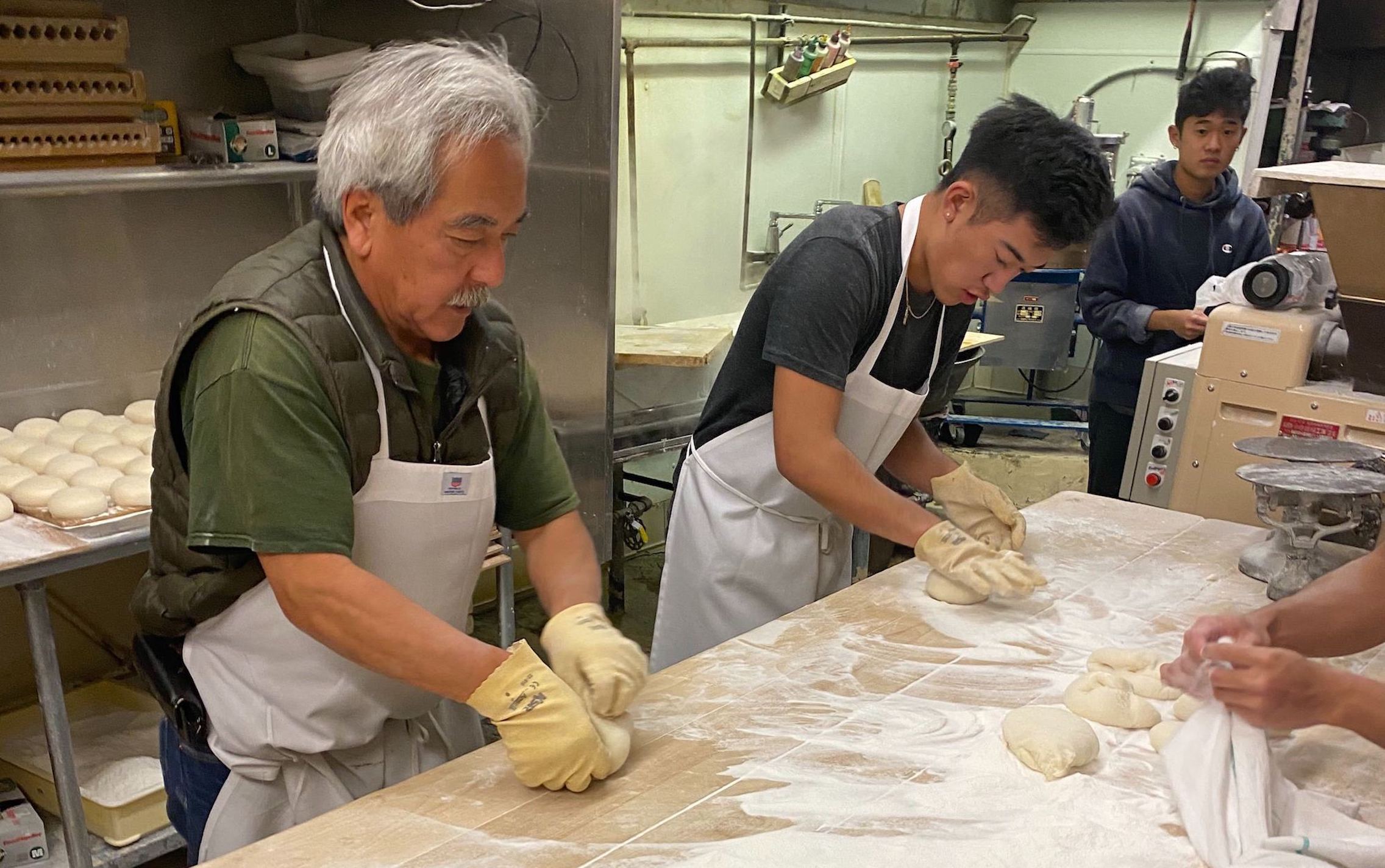
Mochi is a Japanese confection (Wagashi), found usually in the shape of a small, round rice cake made from glutinous rice which can be eaten with condiments such as Kinako (roasted soy bean flour), manju (sweet red bean paste), soy sauce dip, and seaweed and enjoyed with a cup of tea. Manju is a confection that is steamed or baked with cake flour whereas mochi, or mochigashi, refers to something made with mochi (a rice product such as rice flour, sweet rice flour and/or sweet rice).
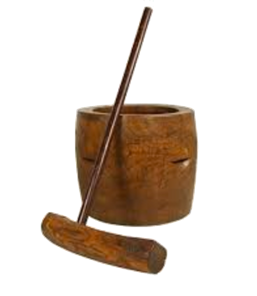
Traditionally, mochi is made by pounding steamed glutinous rice in a large wooden mortar, called the usu, with a wooden mallet called the kine. Mochi-tsuki is the Japanese term for the old-style method of pounding the steamed glutinous rice used to make mochi. The sticky dense mounds of rice are made from mochigome, a sweeter stickier type of rice, different from the steamed rice eaten every day.
Mochi was originally made as offerings to kami (gods) at shrines. This offering was then cut into small pieces and given to people for good health and fortune. Later, the mochi came to be eaten on various festive occasions and during the Heian Era (794-1192), it became an integral part of the New Year. In the Spring, special types are made for Girl’s and Boy’s Day in March and May and in the Summer months of July, Kuzumochi is featured. All seasonal manju and mochi made for these occasions must be ordered in advance.
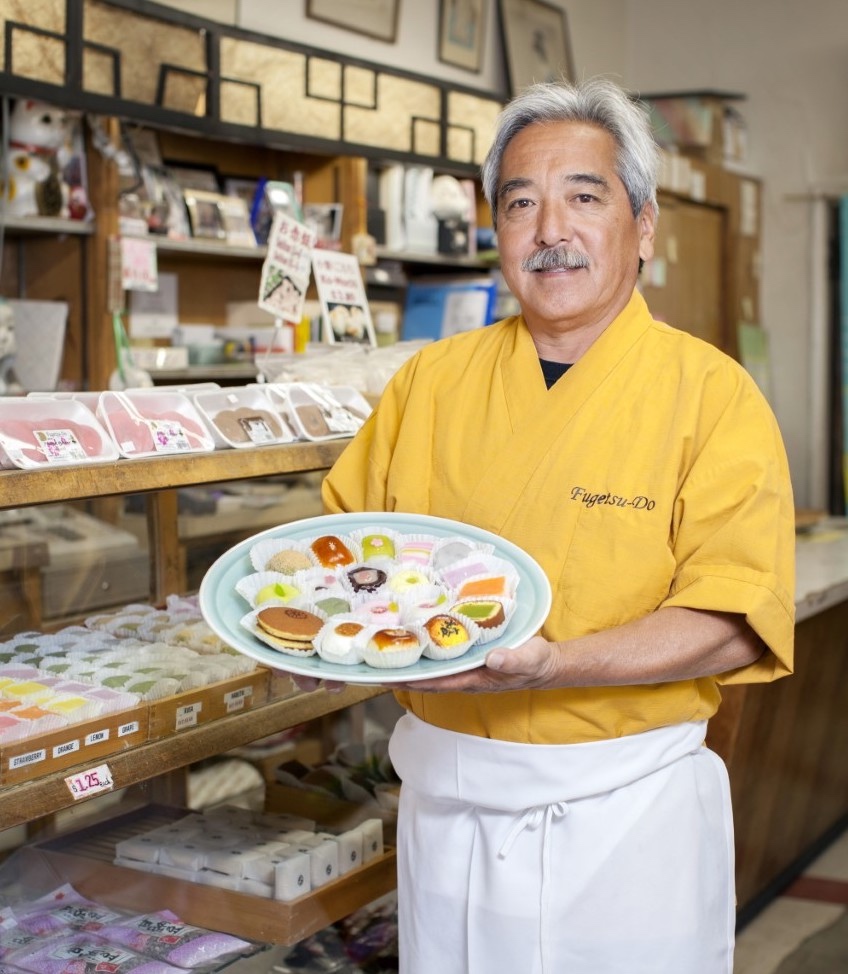
It takes years to learn the basic techniques of Japanese confectionery, but it takes ten years to become a Master Wagashi confectioner. Brian Kito, the current owner and third-generation Master confectioner has over 46 years of experience. In addition to the many traditional sweets with red and white bean fillings and plain mochi varieties, Brian has created some contemporary flavors and types such as brightly-colored soft fruit-flavored dango and chocolate and peanut butter filled mochi popular with younger generations. Many wagashi confectioners learned their trade and artistry as apprentices to earlier generations, learning alongside their grandparents and parents. Now those interested in pursuing careers in Japanese confectonery can find programs available at many cooking schools in the U.S. and in Japan as part of their curriculum.
According to online sources, there are over 25 different traditional varieties of wagashi, but new flavors, types and designs are being created every day. Mochi, made from glutinous rice, is popular during the winter holidays. Manju, made from an, a cake-like coating that is filled with white or red sweet azuki beans, are often shaped like a peach or animal. Others are made from fried dough covering various fillings, some are made from rice flour and steamed and some are created from folding a pancake-like covering over a filling similar to a taco shape. Since wagashi is an art form steeped in tradition and difficult to master, very few artisans have earned Master status. You will see many different kinds of colors and shapes from intricate chyrsanthemums made from snipping a round ball of mochi, to colorful rainbow-colored dango, to whimsical animal and flower shapes.
